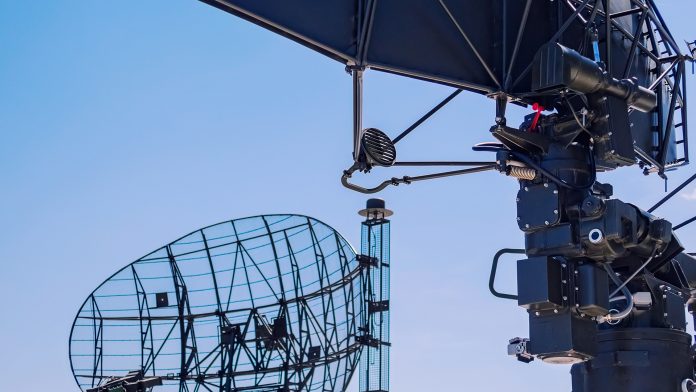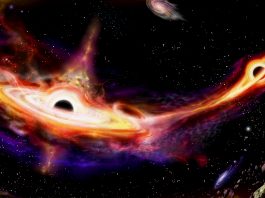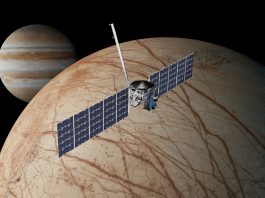Scientists have collected the highest-resolution radar images of the Moon from the ground, paving the way for a next-generation radar system to study planets, moons, and asteroids in the Solar System.
The National Radio Astronomy Observatory (NRAO), Green Bank Observatory (GBO), and Raytheon Intelligence & Space (RIS) are designing a high-power, next-generation planetary radar system for the GBT, the world’s largest fully steerable radio telescope. The prototype of this system produced some of the highest-resolution planetary radar images ever captured from Earth.
Using the National Science Foundation’s Green Bank Telescope (GBT) and Very Long Baseline Array (VLBA), the team tested a low-power radar transmitter, with up to 700 watts of output power at 13.9 GHz, designed by RIS, aimed at the Moon’s surface, and radar echoes were received with NRAO’s ten 25-meter VLBA antennas.
An image of the Tycho crater was captured with a five-metre resolution, showing unprecedented detail of the Moon’s surface from Earth. “It’s pretty amazing what we’ve been able to capture so far, using less power than a common household appliance,” said Patrick Taylor, radar division head for GBO and NRAO.
Preventing global devastation on Earth
Design work continues for the radar system, a 500 kilowatt, Ku-band (13.7 GHz) planetary radar for the GBT, using the VLBA and the future Next Generation Very Large Array (ngVLA) as receivers.
This high-power system would have nearly 1,000 times the output power and several times the waveform bandwidth (up to 600 MHz), allowing for even higher-resolution imaging.
A radar system like this will serve in the frontline of planetary defence, as it can detect, track, and characterise potentially hazardous objects that may be on a crash course with Earth. “In our tests, we were able to zero in on an asteroid 2.1 million kilometres away from us—more than five times the distance from the Earth to the Moon. The asteroid is about a kilometre in size, which is large enough to cause global devastation should there be an impact,” Taylor explained.
“With the high-power system, we could study more objects much further away. When it comes to developing strategies for possible impacts, having more warning time is everything.”
These capabilities recently came in handy to support NASA’s Double Asteroid Redirection Test (DART) mission, with GBT data confirming that the impact of NASA’s DART spacecraft with an asteroid had indeed altered its course in the first demonstration of asteroid deflection technology.
Astronomers will find the new radar system useful for astrometry, imaging, and physical and dynamical characterisation of Solar System objects for planetary science. In the near term, integration of a medium-power, Ku-band transmitter (of at least 10 kW) would develop an end-to-end system at GBO/NRAO for real-time radar observations and lay the foundation for the flagship high-power system.
Making new advances in astronomy
The GBT’s new radar capabilities will introduce a tool that astronomy has not had before, collecting data at higher resolutions and at wavelengths not previously available. NRAO and GBO are also developing advanced data reduction and analysis tools that have not been available before.
Taylor concluded: “At NRAO and GBO, we have a long history of participation in planetary radar studies, and we look forward to adding new capabilities to the GBT and VLBA to produce a next-generation radar system that will serve as a valuable tool for researchers in planetary science and planetary defence.”









